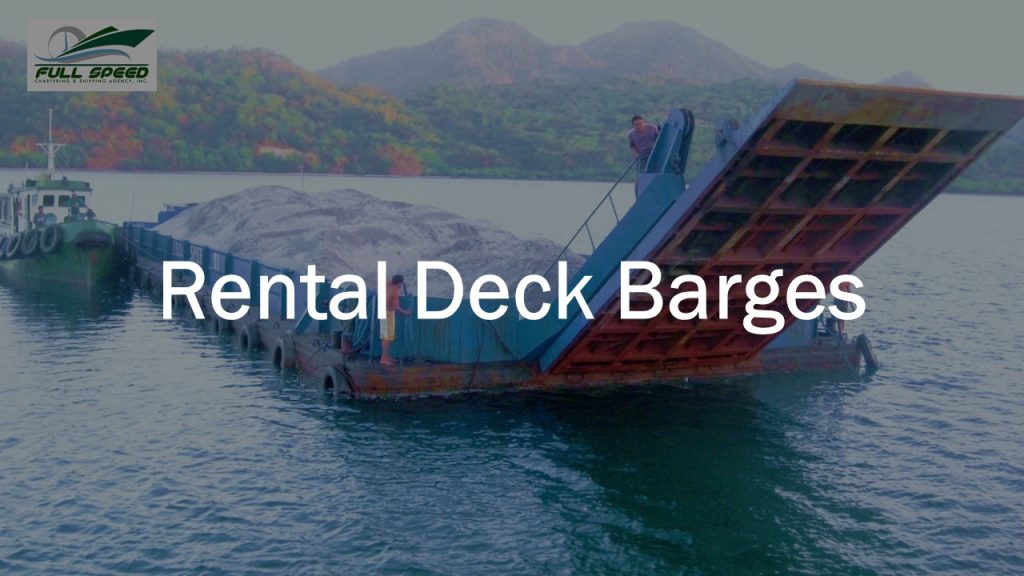Are you tired of playing a guessing game when it comes to measuring the load capacity of barges in the Philippines? Introducing our cutting-edge solution: the barge capacity calculator. Designed with precision and accuracy in mind, this innovative tool takes all the guesswork out of determining how much weight a barge can handle without compromising safety or efficiency. Say goodbye to costly miscalculations and hello to streamlined cargo operations as we unravel the mysteries behind barge load capacities. Whether you’re an entrepreneur looking for ways to optimize logistics or simply curious about maritime technology, get ready for a deep dive into our comprehensive guide on mastering the art of calculating barge load capacity using state-of-the-art tools like never before.
Click here to learn about our fleet of barges and LCTs.
Click here to learn about our tug and barge.
Factors Affecting Barge Load Capacity: Barge Capacity Calculator
Factors affecting barge load capacity in the Philippines can vary greatly, depending on several key factors. One important factor to consider is the size and dimensions of the barge itself. Larger barges with more spacious interiors will naturally have a higher load capacity compared to smaller barges. Additionally, the design of the barge, including its hull shape and overall structural integrity, can also impact its maximum load capacity.
Another crucial factor to consider when calculating barge load capacity is the weight distribution of the cargo being transported. Uneven weight distribution can affect stability and potentially lead to capsizing or other accidents. Therefore, it’s important to distribute cargo evenly across a barge’s deck to ensure safe navigation.
Furthermore, environmental conditions such as water depth and currents can also impact a barge’s load capacity. Shallow water depths necessitate lighter loads due to the increased risk of running aground. Strong river currents or rough seas may pose similar limitations on heavier cargo transport.
Calculating barge load capacity requires careful consideration of all these factors in order to ensure safe and efficient transportation of goods in the Philippines’ diverse waterways. By utilizing a reliable barge capacity calculator that takes into account these various factors, businesses can streamline their logistics planning while ensuring compliance with safety regulations and avoiding unnecessary risks or delays during transit.
Are You Looking for a Barge for Time Charter or Voyage Charter in the Philippines?
Full Speed Chartering and Shipping Agency, Inc. (FSCSAI) is your go-to partner if you are looking for a barge for time charter or voyage charter in the Philippines. With years of experience in the industry, FSCSAI provides reliable and efficient barge services that can meet your transportation needs.
- Email us: info@fullspeedchartering.com
- Mobile, Viber, WhatsApp: +63 939 3753224
- Facebook Messenger: Click here
- Click here to inquire
One of the key advantages of choosing FSCSAI for your barge charter needs is their expertise in calculating barge load capacity in the Philippines. Their team of professionals uses advanced techniques and tools to accurately determine the weight that a barge can safely carry, taking into consideration various factors such as size, construction, and distribution of cargo.
Not only does FSCSAI provide accurate calculations, but they also offer personalized solutions tailored to your specific requirements. Whether you need a small barge for local deliveries or a larger vessel for international shipments, FSCSAI has a wide range of options to choose from. By understanding your cargo’s nature and volume, they can recommend the most suitable barge size and configuration to ensure smooth operations and cost-effective transportation.
If you are in search of a reliable partner for your barge charter needs in the Philippines, Full Speed Chartering and Shipping Agency, Inc. (FSCSAI) is an excellent choice. With their expertise in calculating load capacity and their wide range of vessels available for charter, they can provide efficient and personalized solutions to meet all your transportation requirements. Trust FSCSAI to deliver exceptional service and exceed your expectations. Whether you need to transport heavy machinery, construction materials, or bulk cargo, their experienced team will handle every aspect of the charter process with the utmost professionalism and efficiency.
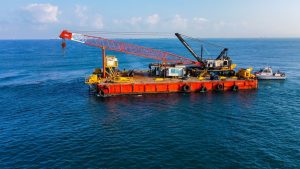
Step-by-step guide on calculating barge load capacity: Barge Capacity Calculator
When it comes to barge load capacity, the importance of accurate calculations cannot be overstated. Whether you’re transporting goods or planning a construction project, understanding the maximum weight a barge can carry is crucial for efficiency and safety. In this step-by-step guide, we will walk you through the process of calculating barge load capacity using a reliable tool, the Barge Capacity Calculator.
Step 1: Determine the dimensions of your barge. Please measure the length, width, and height of the barge to determine its total volume in cubic meters.
Step 2: Calculate the draft of your barge by subtracting its loaded depth from its empty depth. The difference between these depths will give you an estimate of how much weight can be added without exceeding buoyancy limits.
Step 3: Consider additional factors that may affect load capacity, such as wave height and stability requirements.
Step 4: Use the Barge Capacity Calculator to input your measurements and obtain an accurate assessment of your barge’s load capacity.
By following these steps and utilizing an efficient calculation tool like our Barge Capacity Calculator, you can confidently determine how much weight your barge can safely carry. With this information in hand, you will be better equipped to plan logistics operations or execute construction projects smoothly.
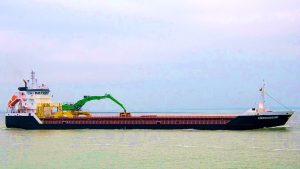
Example Calculations and Scenarios: Barge Capacity Calculator
Now that we have a clear understanding of the factors that determine barge load capacity in the Philippines let’s dive into some example calculations and scenarios using a barge capacity calculator.
Let’s say you need to transport construction materials from Manila to Cebu for a large building project. The total weight of the materials is estimated to be 1,500 metric tons. Using a barge with an average draft of 3 meters and a width of 20 meters, we can calculate its maximum capacity by multiplying the draft by the width and length of the barge. For this example, let’s assume that the length is 50 meters. The calculation would be as follows: 3m (draft) x 20m (width) x 50m (length) = 30,000 cubic meters. Given that one metric ton equals one cubic meter for most construction materials, we can determine that this particular barge has a maximum load capacity of 30,000 metric tons.
In another scenario, let’s consider transporting goods from Mindanao to Luzon using barges with varying capacities. Barges A and B have lengths of 40 meters each but differ in their widths—10 meters for Barge A and 15 meters for Barge B. Assuming both barges have an average draft of 2.5 meters, we can calculate their respective load capacities as follows:
Barge A:
20m (width) x 40m (length) x 2.5m (draft) = 20,000 cubic meters. Since one metric ton equals one cubic meter, Barge A has a load capacity of 20,000 metric tons.
Barge B:
15m (width) x 40m (length) x 2.5m (draft) = 15,000 cubic meters. Therefore, Barge B has a load capacity of 15,000 metric tons.
With these load capacities, both barges can transport significant amounts of goods from Mindanao to Luzon. However, Barge A has a higher load capacity of 20,000 metric tons compared to Barge B’s 15,000 metric tons. This means that Barge A can carry more cargo in one trip compared to Barge B.
The difference in width between the two barges contributes to their varying load capacities. The wider width of Barge A allows it to accommodate a larger volume of cargo, resulting in its higher load capacity. On the other hand, Barge B’s narrower width restricts the amount of cargo it can carry on each trip.
The length and draft of both barges also play a role in determining their load capacities. The longer length of Barge A allows for more storage space, while the deeper draft ensures that it can carry heavier loads without compromising stability.
In terms of efficiency and cost-effectiveness, Barge A has an advantage over Barge B. Its larger volume capacity and ability to carry heavier loads make it more efficient in transporting cargo. This means that fewer trips would be needed to transport the same amount of goods, resulting in cost savings for the company. Additionally, the wider width of Barge A allows for easier loading and unloading of cargo, reducing turnaround times at ports and further increasing efficiency.
However, there are certain advantages that Barge B has over its counterpart. Despite its narrower width, Barge B has a shallower draft, allowing it to navigate in shallower waters and reach ports that Barge A might not be able to access. This gives Barge B more flexibility in terms of the destinations it can serve, which could be advantageous for companies with specific shipping requirements.
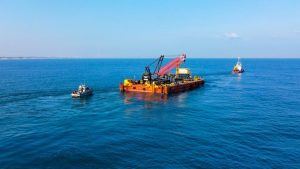
Importance of Calculating Barge Load Capacity: Barge Capacity Calculator
Calculating barge load capacity is an essential aspect of any maritime operation in the Philippines. It ensures that goods and materials are transported safely and efficiently across bodies of water, allowing for smooth trade and commerce within the country. The significance of accurately determining the load capacity cannot be overstated, as it directly impacts the profitability and overall feasibility of shipping operations.
One key reason why calculating barge load capacity is so important is that it helps prevent overloading, which can have dangerous consequences. Overloaded barges pose a significant risk to navigational safety, potentially leading to accidents or capsizing. By using a reliable barge capacity calculator, shipowners can ensure that their vessels are optimally loaded within safe limits, mitigating risks associated with uneven weight distribution or excessive loads.
Furthermore, accurate knowledge of barge load capacity allows companies to maximize their transportation efficiency. By carefully considering the weight and volume limitations of barges before loading them up, businesses can ensure that they are utilizing their resources effectively. This means making optimal use of available space while avoiding unnecessary trips caused by underutilized capacities.
Understanding and valuing the importance of calculating barge load capacity is crucial for successful maritime operations in the Philippines. It promotes safety on waterways by preventing overloaded vessels from endangering lives and property. Moreover, accurate calculations enable businesses to optimize transportation efficiency while reducing costs associated with inefficiencies caused by improper loading practices. By utilizing a robust barge capacity calculator tool, stakeholders in the shipping industry can ensure smoother logistics operations and enhance overall productivity. This tool takes into account various factors, such as the dimensions of the barge, weight restrictions, and environmental conditions, to provide accurate load capacity calculations.

Understanding the Philippine barge load capacity regulations: Barge Capacity Calculator
Calculating barge load capacity in the Philippines may seem like a complicated task, but with the help of a barge capacity calculator, it becomes much easier to determine the maximum weight that a barge can safely transport. These regulations are in place to ensure the safety of both the crew and the cargo being transported.
The barge capacity calculator takes into account various factors, such as the dimensions of the barge, including length, width, and depth. It also considers other important parameters like draft and freeboard, which contribute to determining the maximum allowable load. Additionally, special considerations must be made for barges used for specific purposes, such as transporting hazardous materials or heavy machinery.
Understanding these regulations is crucial for anyone involved in maritime transportation in the Philippines. By utilizing a barge capacity calculator and adhering to these guidelines, ship owners and operators can ensure not only compliance with government regulations but also maximize efficiency and avoid any potential risks or accidents during cargo transport.

Common challenges in calculating barge load capacity: Barge Capacity Calculator
One common challenge in calculating barge load capacity is the variation in the weight and dimensions of cargo. Barges are designed to transport a wide range of goods, from bulk commodities like coal and grains to heavy machinery and oversized equipment. Each type of cargo has its specific weight distribution and dimensions, which can complicate the calculation process. For example, bulky items may occupy more space on the barge while being relatively lightweight, whereas dense materials like steel might require less space but have significant weight implications. It is crucial for operators to accurately determine the total weight and distribute it evenly across the barge to ensure safe navigation.
Another challenge arises from external factors such as water density variations caused by tidal changes or different locations along a river or coastline. Water density affects buoyancy, which directly impacts how much weight a barge can carry safely. As water density changes throughout its journey or if it operates on different bodies of water such as rivers, lakes, or open seas, the barge’s load capacity must be adjusted accordingly. Accurate calculations accounting for varying water densities become critical in ensuring that barges operate within safe limits.
Considering these challenges, having an efficient barge capacity calculator tool becomes invaluable for operators in managing their cargo logistics effectively. Such tools not only streamline complex calculations but also provide real-time adjustments based on fluctuating factors like cargo weights and changing water densities. By leveraging technology-driven solutions tailored specifically for maritime operations with dynamic variables involved, operators can improve safety standards while optimizing productivity in this crucial sector of the transportation industry.

Tips for Maximizing Barge Load Efficiency: Barge Capacity Calculator
Transporting goods by barge is a cost-effective and efficient way to move large volumes of cargo. However, maximizing the load efficiency of barges requires careful planning and calculation. One tool that can greatly assist in this process is a barge capacity calculator. This calculator takes into account various factors such as weight, volume, dimensions, and water displacement to determine the maximum capacity of a barge.
Using a barge capacity calculator allows shippers and freight forwarders to optimize their cargo loads and ensure they are utilizing the full potential of the available space on a barge. By accurately calculating the load capacity, it becomes easier to plan shipments accordingly and avoid wasting valuable space or overloading the vessel.
Additionally, a barge capacity calculator can help identify any potential risks or issues with loading certain types of cargo onto the barge. It takes into account factors such as stability, buoyancy, and weight distribution to ensure safe transportation. This information is especially crucial when dealing with hazardous materials or oversized items that may require special handling or stowage arrangements.
Utilizing a barge capacity calculator is an essential tool for anyone involved in transporting goods by barge. It enables efficient use of available space, minimizes risks during transportation, and optimizes overall load efficiency. By employing this technology-driven approach to calculating barge load capacity in the Philippines or anywhere else in the world, businesses can streamline their operations while minimizing costs and maximizing profitability.
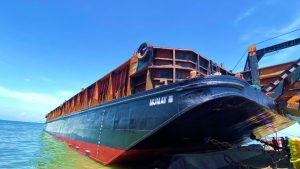
Considerations Before Hiring a Barge in the Philippines: Barge Capacity Calculator
One important consideration before hiring a barge in the Philippines is to assess the load capacity that you require for your specific project. This can be done using a barge capacity calculator, which takes into account various factors such as the weight and volume of the cargo as well as any additional equipment or personnel that will be on board. By accurately calculating the load capacity, you can ensure that the barge you hire is capable of transporting your cargo safely and efficiently.
Another factor to consider when hiring a barge in the Philippines is the specific requirements of your project. Each project may have unique needs, such as transportation of heavy equipment or hazardous materials. It is important to communicate these requirements with potential barge operators to ensure they are able to meet them. Additionally, consider factors such as port access and water depths that might affect the ability of a particular barge to reach your desired destination.
When considering hiring a barge in the Philippines, it is crucial to use a reliable barge capacity calculator to determine the appropriate load capacity for your cargo. Additionally, take into account any specific project requirements and communicate them effectively with potential operators. By considering these factors carefully, you can make an informed decision and ensure that your cargo reaches its destination safely and efficiently on board a suitable barge.

What Happens When You Do Not Calculate Barge Load Capacity? Barge Capacity Calculator
When it comes to transporting goods by barge, accurately calculating the load capacity is essential. However, many operators often overlook this crucial step or rely on rough estimates, which can have disastrous consequences. Without proper calculations, a barge may become overloaded and unstable, posing risks to both cargo and crew.
One of the major dangers of not calculating barge load capacity is the risk of capsizing or sinking. Overloading a barge beyond its maximum weight limit can compromise its stability and buoyancy. This imbalance puts immense pressure on the vessel’s structure, potentially leading to structural failure and catastrophic accidents at sea.
Furthermore, exceeding a barge’s load capacity can also result in damage or loss of cargo. When a barge is overloaded, the weight distribution becomes uneven, increasing the likelihood of shifting cargo during transit. This movement can cause breakage or even complete loss of goods overboard. Apart from financial losses for businesses involved in shipping operations, these incidents can also harm marine ecosystems as well as endanger other vessels in close proximity.
Neglecting to calculate barge load capacity poses significant risks to both safety and efficiency in maritime transportation. By investing in reliable tools such as a barge capacity calculator that takes into account various factors like stability conditions and payload limits specific to each individual vessel type, operators can ensure safe and sustainable transportation operations while avoiding potential disasters at sea.
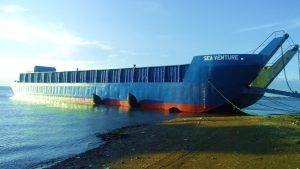
Final Thoughts: Barge Capacity Calculator
In conclusion, calculating barge load capacity in the Philippines requires a comprehensive understanding of various factors. While the standard formula for calculating payload may be straightforward, it is important to consider the specific regulations and limitations set by local authorities. Additionally, factors such as weather conditions, water depth, and port infrastructure play a crucial role in determining barge load capacity.
Moreover, it is essential to account for safety margins when calculating barge load capacity. Overloading a barge can lead to stability issues and potentially dangerous situations. Therefore, taking into consideration not only the maximum carrying capacity but also adhering to recommended weight limits is imperative.
Lastly, beyond just calculations and regulations, it is essential to work with experienced professionals who understand the nuances of barge operations in the Philippines. Their expertise can provide valuable insights and ensure that accurate calculations are made based on real-life conditions. By considering all these factors together, stakeholders involved in maritime transportation can optimize their cargo handling operations and ensure safe and efficient shipping processes throughout the Philippines’ archipelago.

